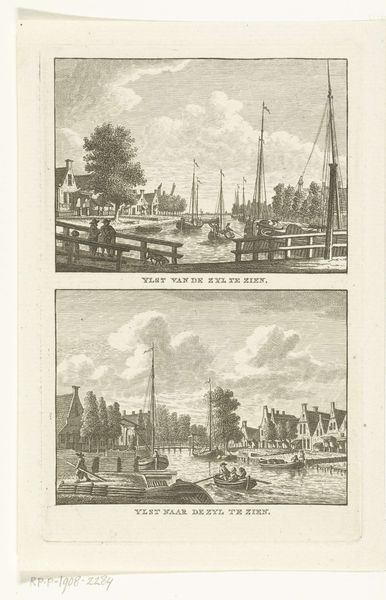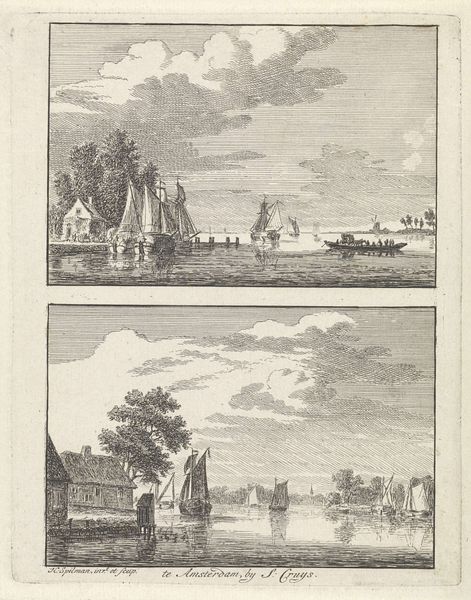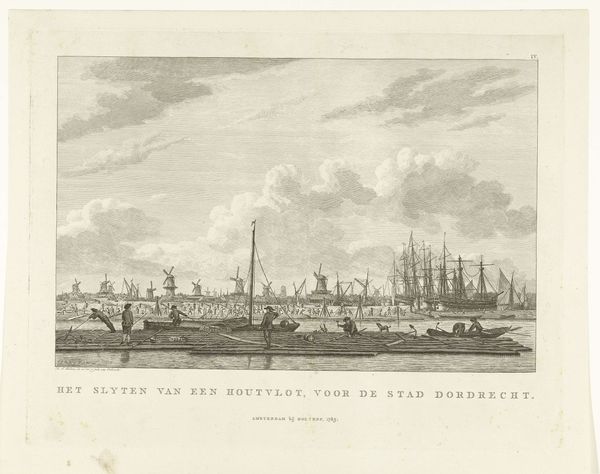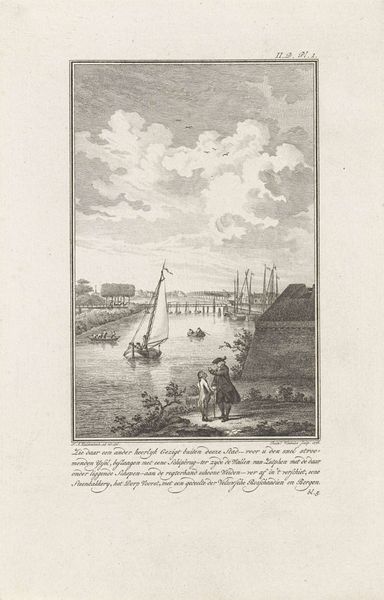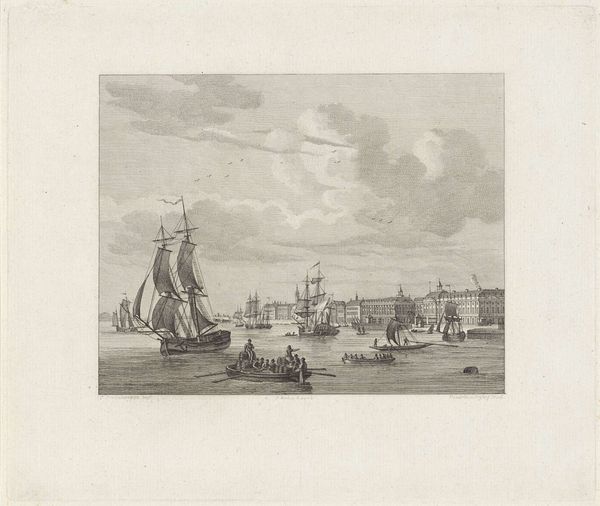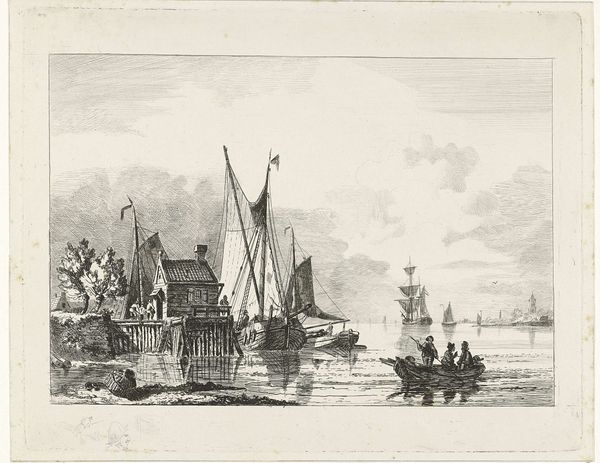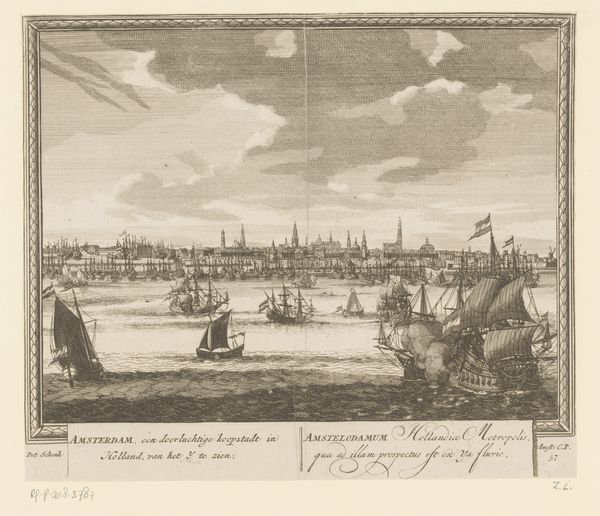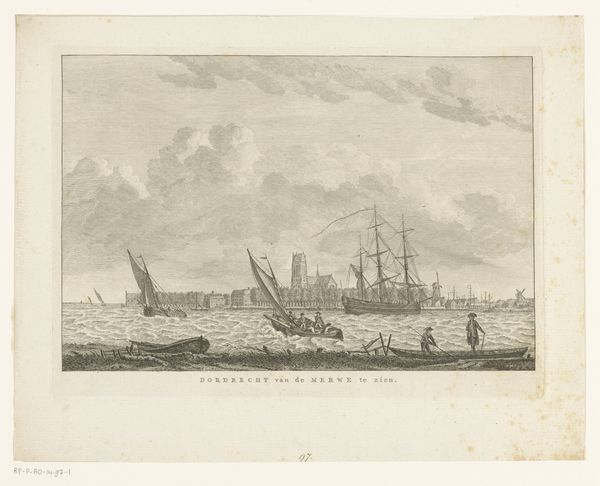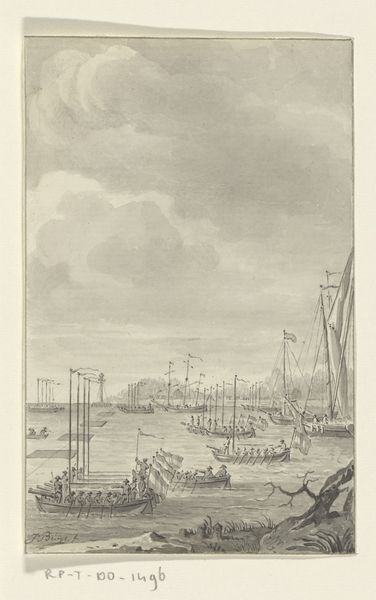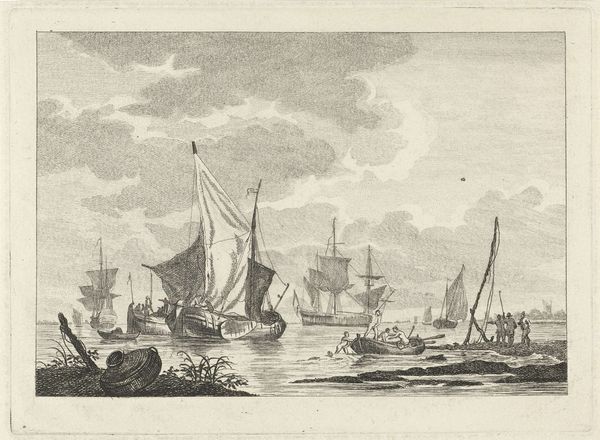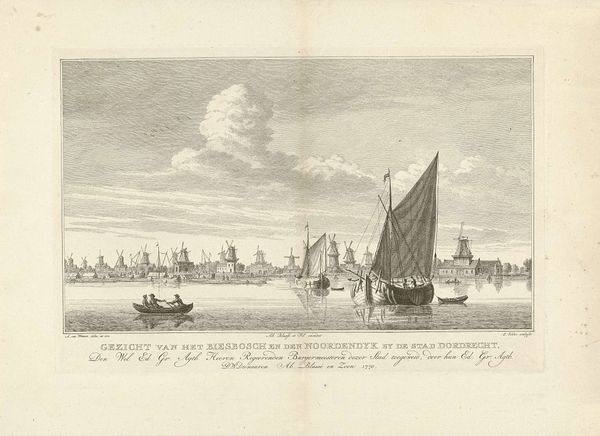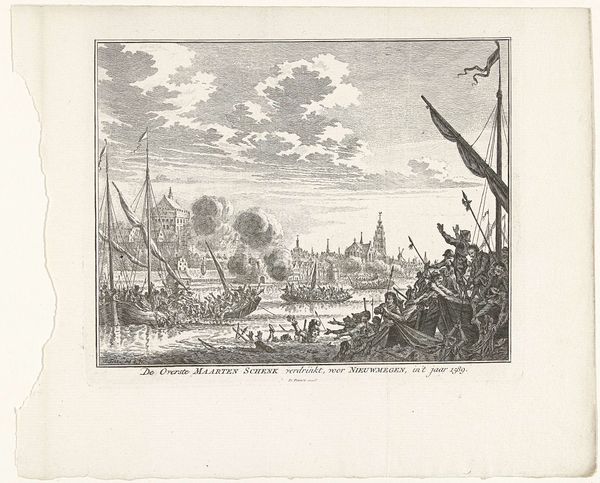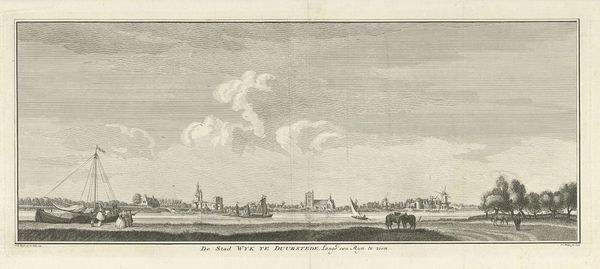
Twee gezichten op de dorpen Bergum en Oostermeer 1786 - 1792
0:00
0:00
carelfrederikibendorp
Rijksmuseum
print, engraving
#
dutch-golden-age
# print
#
landscape
#
cityscape
#
engraving
Dimensions: height 170 mm, width 107 mm
Copyright: Rijks Museum: Open Domain
Editor: Here we have "Twee gezichten op de dorpen Bergum en Oostermeer," two views of the villages of Bergum and Oostermeer, created between 1786 and 1792 by Carel Frederik Bendorp. It's an engraving, a print. What strikes me is the contrast between the two scenes. One feels very peaceful and the other bustling with boats. What do you see in this work? Curator: These seemingly tranquil landscapes actually speak to a time of great social and economic change. Look at the windmills, for example. They're not just picturesque; they represent industry, ownership, and the control of resources. The Dutch Golden Age was fueled by this kind of technology, but who benefited most from that? Editor: So you're suggesting it's not just a simple depiction of pretty villages? Curator: Exactly. Think about the power structures inherent in these communities. Who owns the land? Who controls the waterways, vital for trade and transportation? The artist may not have explicitly intended to critique this, but by examining these landscapes through a contemporary lens, we can question the narratives of prosperity and progress they seem to convey. The landscapes can even symbolize women's unacknowledged work in maintaining this societal order. Editor: That’s fascinating. I hadn’t considered that a landscape could hold so much commentary on social power. Curator: Indeed. Even seemingly neutral landscapes are imbued with social meaning when critically examined in their historic context, especially when considering gendered narratives and power. We have to interrogate what the images omit, who is empowered, and who is silenced. Editor: That gives me a lot to think about in terms of how we understand art and its relationship to society. Curator: Precisely, it highlights that all artwork is inherently engaged in conversations that often exclude parts of society, and we must engage with that inequality.
Comments
No comments
Be the first to comment and join the conversation on the ultimate creative platform.

